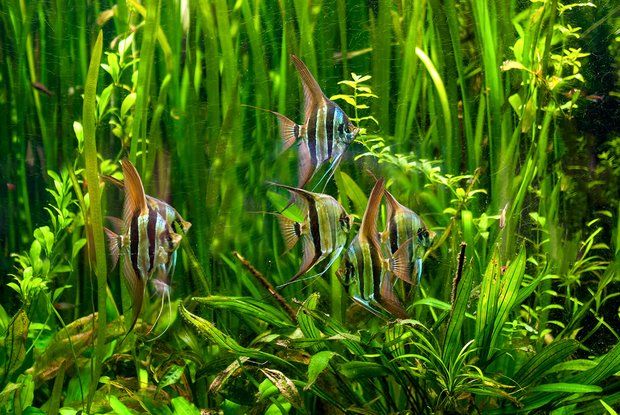
Why are the aquarium plants not growing properly or are showing signs of deficiency?
CO2 (carbon dioxide) is a vital component for plant growth in aquariums. It forms the cornerstone of photosynthesis and ensures healthy plant growth in the aquarium. The CO2 content should be between 15 and 30 mg/L.
CO2 is one of the most important nutrients in aquatic plants and can be responsible for almost any type of deficiency. Here are some signs of a lack of CO2 in the aquarium:
- The plants in the aquarium only grow slowly and do not develop optimally.
- The colors of the plants appear pale or show white lime deposits (biogenic decalcification).
- Increased occurrence of algae in the aquarium. Algae, unlike plants, are not dependent on CO2 and can grow better in low CO2 environments.
- The fish can appear lethargic or stressed if the CO2 level in the aquarium is too low.
- A lack of CO2 can lead to an increase in pH as the CO2 normally helps to lower the pH in the aquarium.
Our carbon fertiliser Bio-CO2improves the absorption and utilization of all important nutrients such as e.g. B. Plant fertilizer. It promotes healthy plant growth through optimized nutrient uptake and intensifies the colourfulness, while at the same time preventing the growth of algae.
Our ARKA® myScape-CO2 System enables CO2 to be effectively, affordably and consistently supplied to every freshwater aquarium. It can be quickly and effortlessly re-filled at home. The myScape-CO2 Checker provides a durable & easy way to monitor the CO2 supply. It can be conveniently placed directly inside the aquarium on the glass and shows whether there is enough CO2 in the aquarium by the control liquid changing colour.
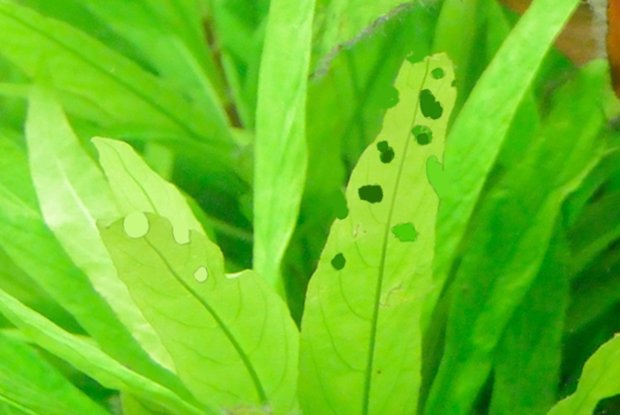
Plants get holes
Holey plants and dying leaf tissue (necroses) are typical signs of potassium deficiency. Initially, these are only visible as dark spots with yellow edges, later the necroses appear over a large area. The growth of new leaves may also be inhibited.
The optimal potassium level in a freshwater aquarium is 5 - 10 mg/L. To effectively prevent a potassium deficiency, use our potassium fertilizer Plants K. This is free of nitrate and phosphate, effectively prevents a potassium deficiency and supports lush plant growth.
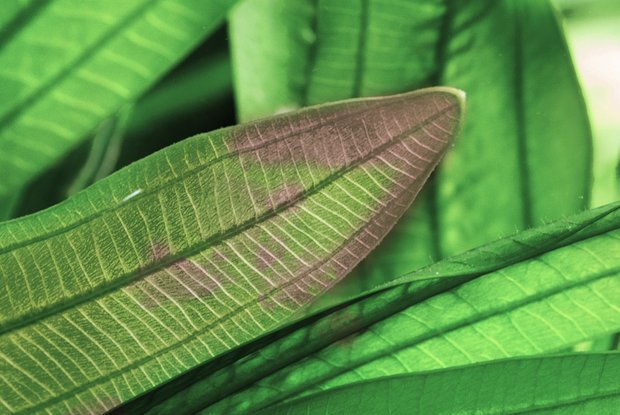
Aquatic plants turn dark or purple
A phosphate deficiency is indicated by very slow plant growth, reduced shoot tips and discoloration of the plant leaves. The otherwise light green usually becomes very dark to purple. A phosphate deficiency can be seen particularly well in stem plants, as these normally grow very quickly.
The optimal phosphate level in a freshwater aquarium is 0.1 - 0.25 mg/L. To increase the PO4 value, use our phosphate fertilizer Plants P. This is free of nitrate, prevents a phosphate deficiency in the long term and supports metabolic processes.
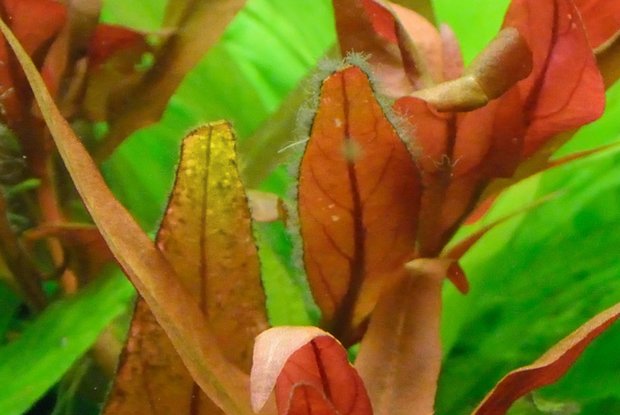
Leaves turn white or yellow
If there is a nitrogen deficiency in your aquarium, this will result in pale, whitish or yellow discoloration of older leaves and reduced growth of new plants. In addition to reduced growth, new leaves are often smaller and there is also sometimes stunted growth. Some plants also become more red in color when nitrogen is deficient. Another sign can be the increased appearance of filamentous algae.
The optimal nitrate level in a freshwater aquarium is 5 - 25 mg/L. To effectively prevent a nitrate deficiency, use our nitrate fertilizer Plants N. This is free of phosphate, sustainably prevents a nitrate deficiency and supports metabolic processes.
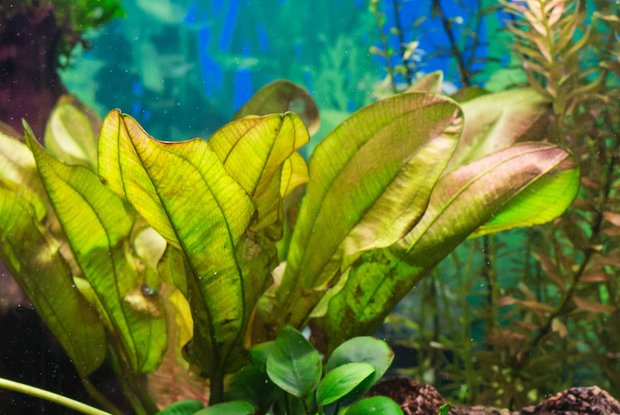
Young shoot tips turn yellow, pink or white
Since iron cannot be translocated within a plant, acute iron deficiency first shows up in young leaves. Their shoot tips usually remain only light green or turn light yellow, pink or white. In addition, the plants stop growing and eventually die.
The optimal iron content in freshwater aquariums is 0.1 - 0.2 mg/L. Remedy for iron deficiency is our iron fertilizer Plants FE. This is free of nitrate and phosphate, prevents iron deficiency in the long term and supports lush plant growth.
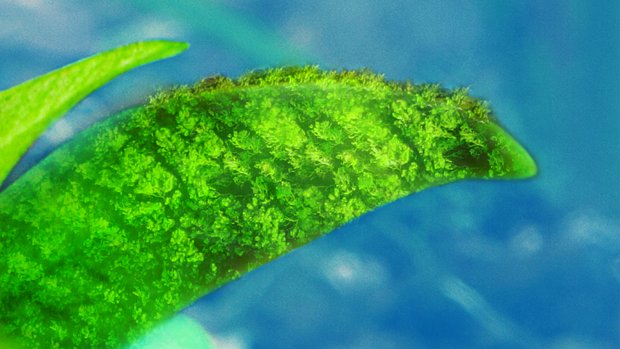
Algae problems in the aquarium
Algae in the aquarium can have many causes. Especially after starting a new aquarium, algae problems occur more often, because the ecological system has not yet settled. Too high nitrite or phosphate values can increase algae growth, as phosphate and nitrite are consumed by algae as nutrients. Silicate is often already present in tap water and can promote the growth of brush and diatom algae. Likewise, a deficiency or imbalance of nutrients can lead to algae growth, e.g., filamentous algae often occurs when there is a deficiency of nitrogen, with other nutrients present at the same time. So always keep an eye on your water values! Other causes for algae growth are e.g. infrequent water changes, low plant growth, too long or unsuitable lighting of the aquarium, overstocking, overfeeding, etc.
If you have problems with algae in your aquarium, we recommend using our Algaway. This is a specially developed algae remover, which stops the growth of existing algae by nutrient removal, pushes them back and sustainably prevents their reformation. Algaway also promotes healthy and vigorous plant growth, which contributes to the natural displacement of algae.
